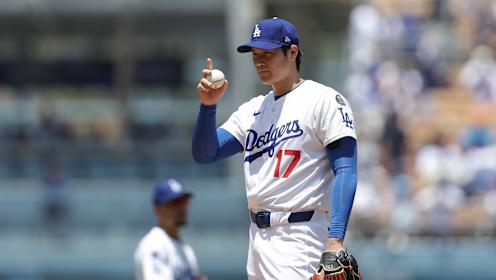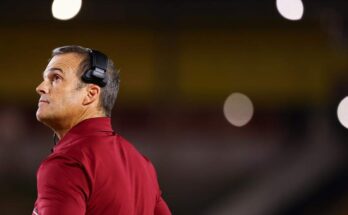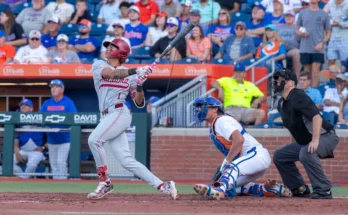Rare Dual Talents in Dodgers History: Only Two Players Ever Hit 10 Home Runs and Pitched in Multiple Games in One Season
In the long and storied history of the Los Angeles Dodgers, a franchise with roots that stretch back to the late 1800s as the Brooklyn Bridegrooms, very few players have managed to etch their names into the team’s record books in a way that transcends positions. Baseball has always valued specialization—hitters hit, pitchers pitch, and rarely do the two ever cross roles successfully. But every so often, an athlete comes along who defies convention. In the Dodgers’ extensive lineage, which includes legends like Jackie Robinson, Sandy Koufax, and Clayton Kershaw, only two players have ever accomplished the rare feat of hitting at least 10 home runs while also taking the mound for at least two games in a single season. These remarkable individuals are Babe Herman and Shohei Ohtani, separated by nearly a century but linked forever by an achievement that is as rare as it is impressive.
Let’s explore who these players were, how they managed to balance their dual roles, and what this tells us about the evolution of the game of baseball.
Babe Herman is a name that doesn’t echo in the halls of modern baseball quite like Babe Ruth, but in his time, he was one of the most dynamic offensive players in the National League. Playing for the Brooklyn Robins—who would later become the Dodgers—in the late 1920s and early 1930s, Herman was primarily an outfielder known for his prodigious bat. In 1929, Herman had a breakout season where he batted .381 with 21 home runs and 113 RBIs. That year, he also made two appearances on the mound, a rare move even in an era when position players were occasionally called in to pitch in blowouts or when teams were short-staffed. Though his pitching outings were limited and not particularly impactful, the fact that he hit over 10 home runs while pitching in multiple games still qualifies him for this unique distinction in Dodgers history.
Herman’s dual-role season is an artifact from a different era of baseball—a time before highly specialized bullpens and analytics-driven lineup decisions. Back then, players were occasionally asked to do whatever the team needed, and while Herman’s pitching was more of a novelty than a strategic weapon, it still placed him in a very small club. His offensive production in 1929 alone was enough to make him one of the most feared hitters of his time. While his pitching stats from that season may not have turned heads, his ability to even take the mound while excelling as a power hitter is notable and has stood the test of time.
Fast forward to the 21st century, and the landscape of Major League Baseball has changed dramatically. Today, players are trained for specific roles from an early age, and the idea of a two-way player at the professional level is often dismissed as unrealistic. Enter Shohei Ohtani, a once-in-a-generation talent who has redefined what is possible in baseball. After joining the Los Angeles Angels in 2018 and immediately drawing comparisons to Babe Ruth for his hitting and pitching prowess, Ohtani shocked the baseball world in 2023 by signing with the Los Angeles Dodgers.
In his very first season with the Dodgers in 2024, Ohtani continued his unprecedented two-way dominance. Though an injury limited his pitching appearances, he still managed to toe the rubber for two games while also launching over 10 home runs as a designated hitter. His presence in the Dodgers’ lineup gave the team both an elite bat and, when healthy, a top-of-the-rotation arm. Though he only pitched in two games due to elbow issues and Tommy John surgery recovery, the fact that he managed to do so while maintaining his offensive output qualifies him for this exclusive club alongside Babe Herman.
What makes Ohtani’s accomplishment even more astounding is the level of competition and athleticism in modern Major League Baseball. Today’s pitchers throw harder, batters hit farther, and defenses are more precise. For Ohtani to not only survive but thrive in both roles is nothing short of revolutionary. He has shattered long-held assumptions about player development and what one individual can contribute to a team. With over 10 home runs, a batting average above .280, and even just two starts on the mound, Ohtani carved out his own slice of Dodgers history—joining Herman as the only other man to reach this statistical milestone.
The contrast between Herman and Ohtani also speaks volumes about the evolution of baseball. Herman’s era was one of looser structure and more improvisation. Teams traveled by train, day games were the norm, and pitchers often threw complete games regardless of pitch count. Players like Herman could dabble in other roles because the stakes, at least from a business and statistical standpoint, were different. Today, players are under immense pressure to specialize, to perfect their craft, and to avoid injury at all costs. Ohtani’s ability to buck that trend and succeed at both hitting and pitching in the modern era is almost mythological.
It’s worth noting how rare this dual-role accomplishment is—not just within the Dodgers organization but across all of Major League Baseball. Since the advent of the designated hitter rule in 1973, the lines between pitchers and hitters have grown even sharper. The notion of a player hitting 10 or more home runs while also pitching in even a handful of games is practically unheard of. In fact, until Ohtani, the last player to regularly serve in a two-way role was probably the great Babe Ruth himself. That’s nearly a century gap between true two-way players making meaningful contributions at the highest level.
This rarity makes the Dodgers’ history even more fascinating. Despite having some of the greatest players to ever wear a uniform—guys like Duke Snider, Don Drysdale, Steve Garvey, and Mike Piazza—none of them achieved this dual statistical milestone. Even Dave Roberts, the current manager, who played during a time when athleticism and versatility were starting to be more appreciated, never had teammates who could impact the game from both the batter’s box and the pitcher’s mound like Ohtani does.
So what does this tell us about the future of baseball and the Dodgers as a franchise? One possibility is that the success of players like Ohtani might encourage a new generation of two-way athletes. With more advanced training, better medical technology, and a willingness from teams to think outside the box, the door is slightly ajar for the next great two-way player. But it will take a truly special talent to reach the heights that Herman and Ohtani have. This is not a path for the average athlete—it’s a pursuit reserved for the truly elite.
From a fan perspective, this kind of versatility adds a level of excitement and unpredictability to the game. Knowing that a player might crush a 450-foot home run one day and strike out the side the next is electrifying. It harks back to the romanticized version of baseball where heroes did it all and legends were made not just by numbers, but by the awe they inspired.
For the Dodgers, a franchise built on tradition and excellence, the presence of dual-threat players like Herman and Ohtani reinforces their place as pioneers in the sport. Whether by accident in Herman’s time or by design in Ohtani’s, the team has always found ways to push the envelope. This legacy of innovation and willingness to embrace rare talent continues to be one of the franchise’s defining characteristics.
In conclusion, only two players in Dodgers history—Babe Herman in 1929 and Shohei Ohtani in 2024—have managed the remarkable feat of hitting at least 10 home runs and pitching in at least two games in the same season. This achievement, though rare, is a testament to their extraordinary skill, adaptability, and commitment to the game. It serves as a bridge between baseball’s colorful past and its rapidly evolving present. Whether as a quirky historical footnote or a sign of things to come, this dual-role legacy is one that Dodger fans and baseball enthusiasts alike can marvel at for generations.



